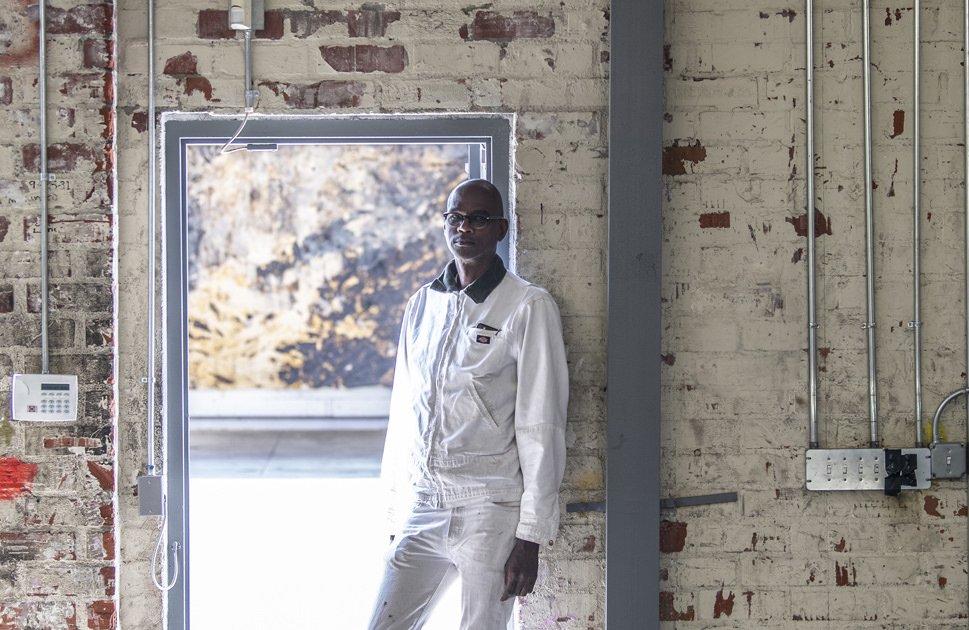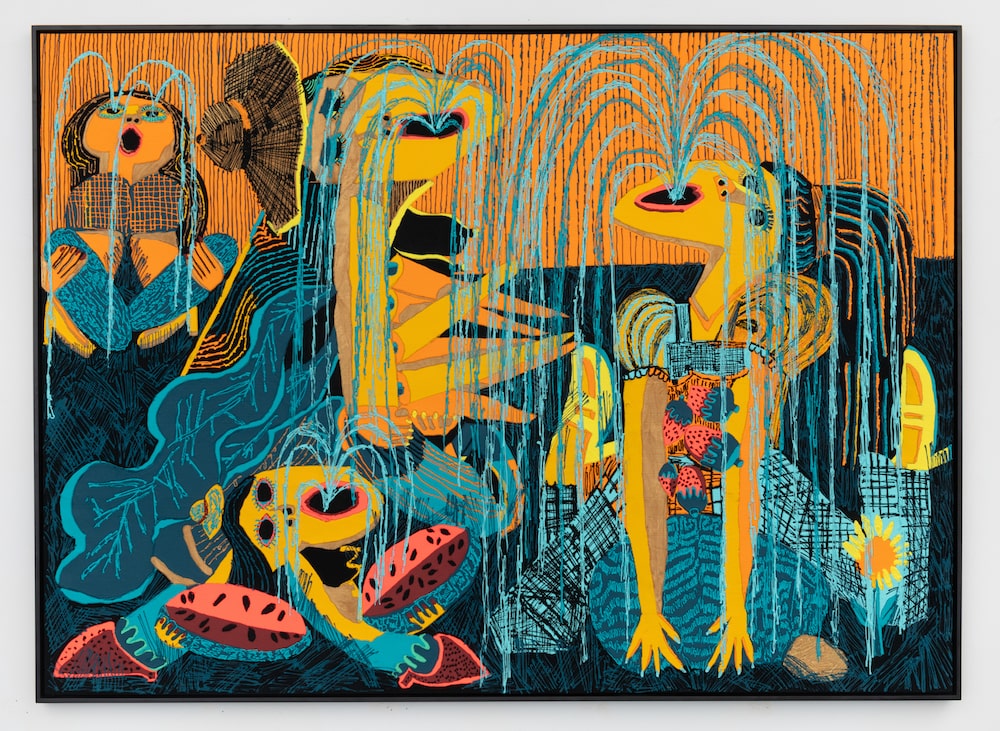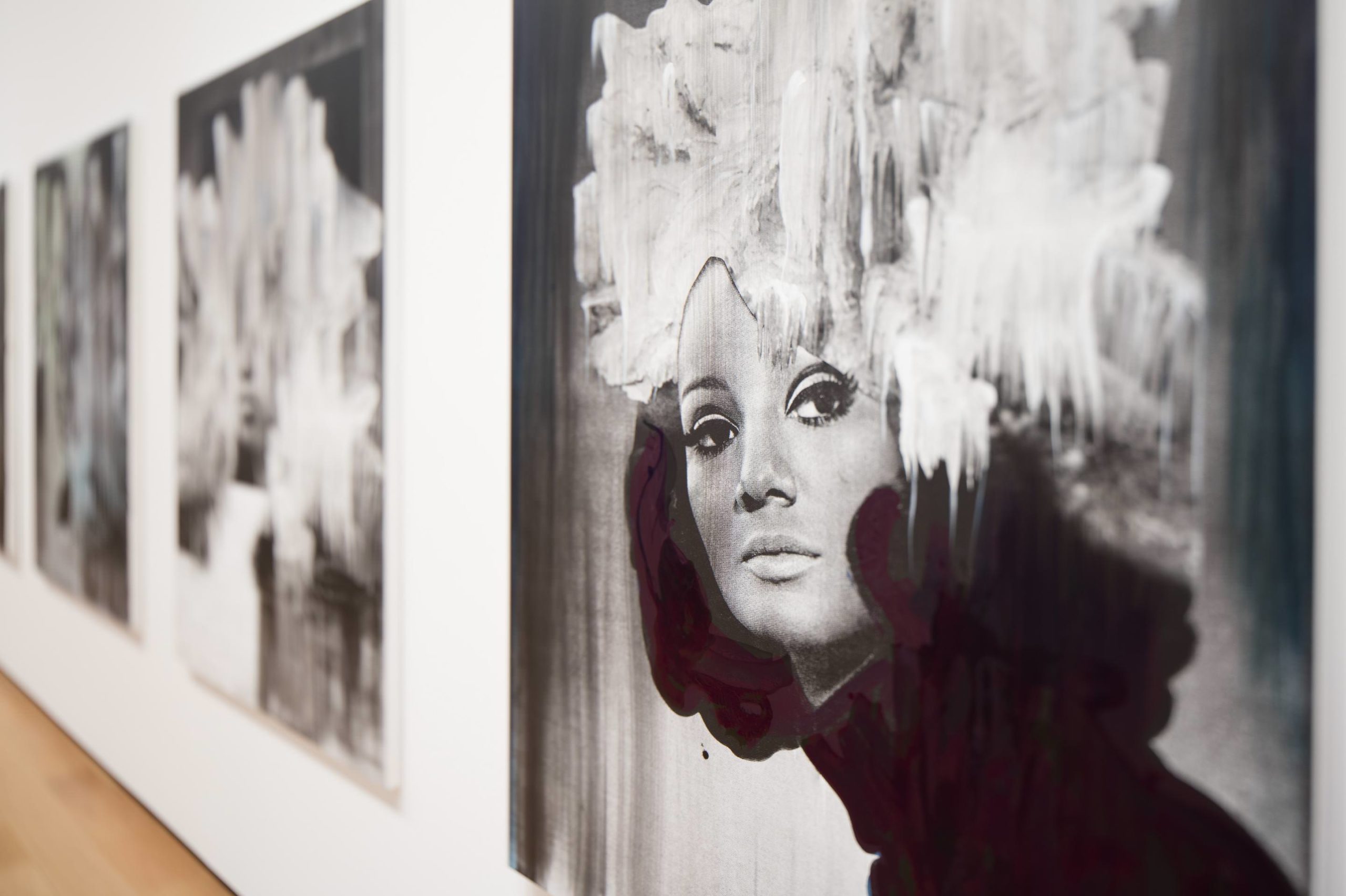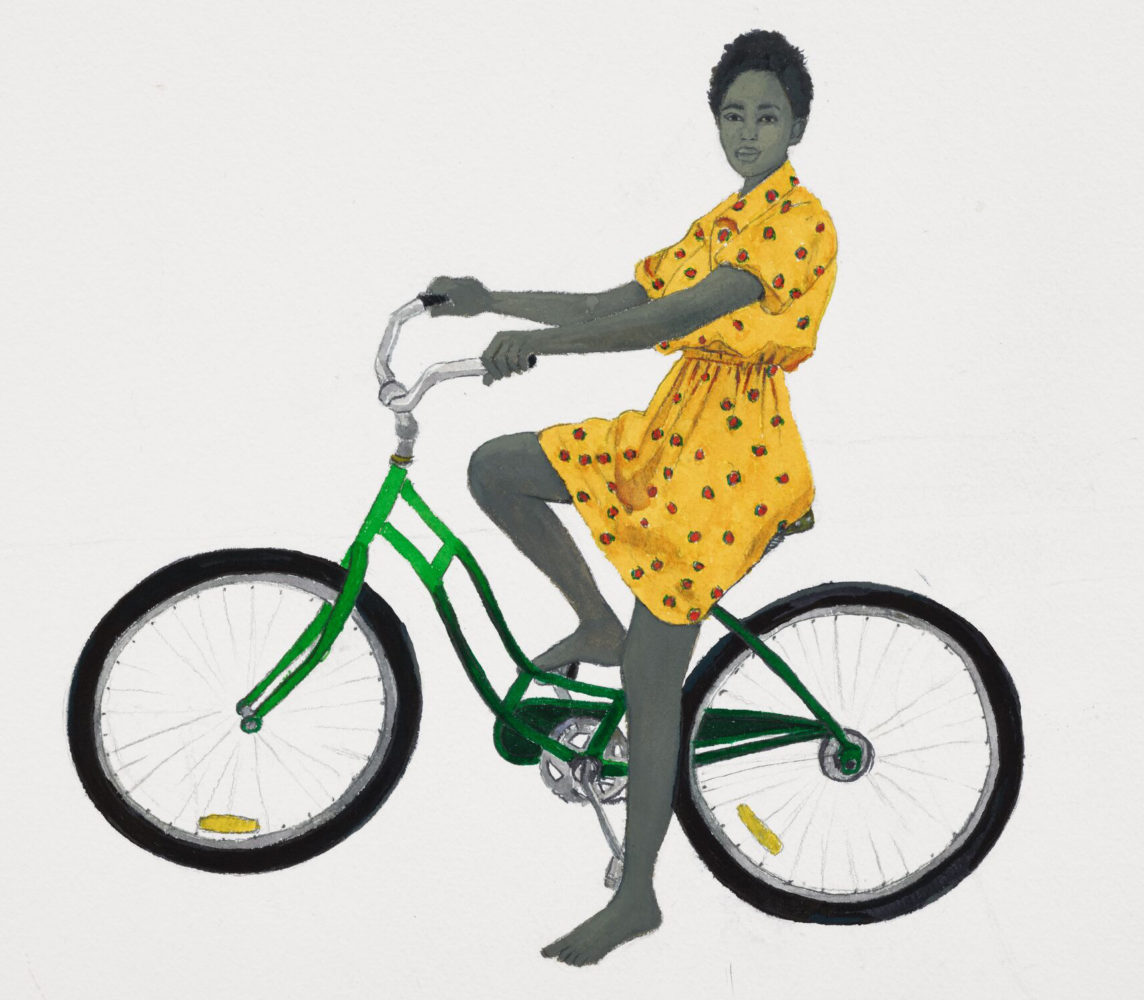Tomorrow at Hauser & Wirth, Mark Bradford presents his inaugural show with the gallery entitled “Cerberus.” On view through December 21, it includes all new works and a film, touching upon the pressures and uncertainties of today. Whitewaller spoke with the artist about bridging history, imagination, and reality, and how he communicates crisis.
WHITEWALLER: Tell us a bit about “Cerberus,” including all new works and a film.
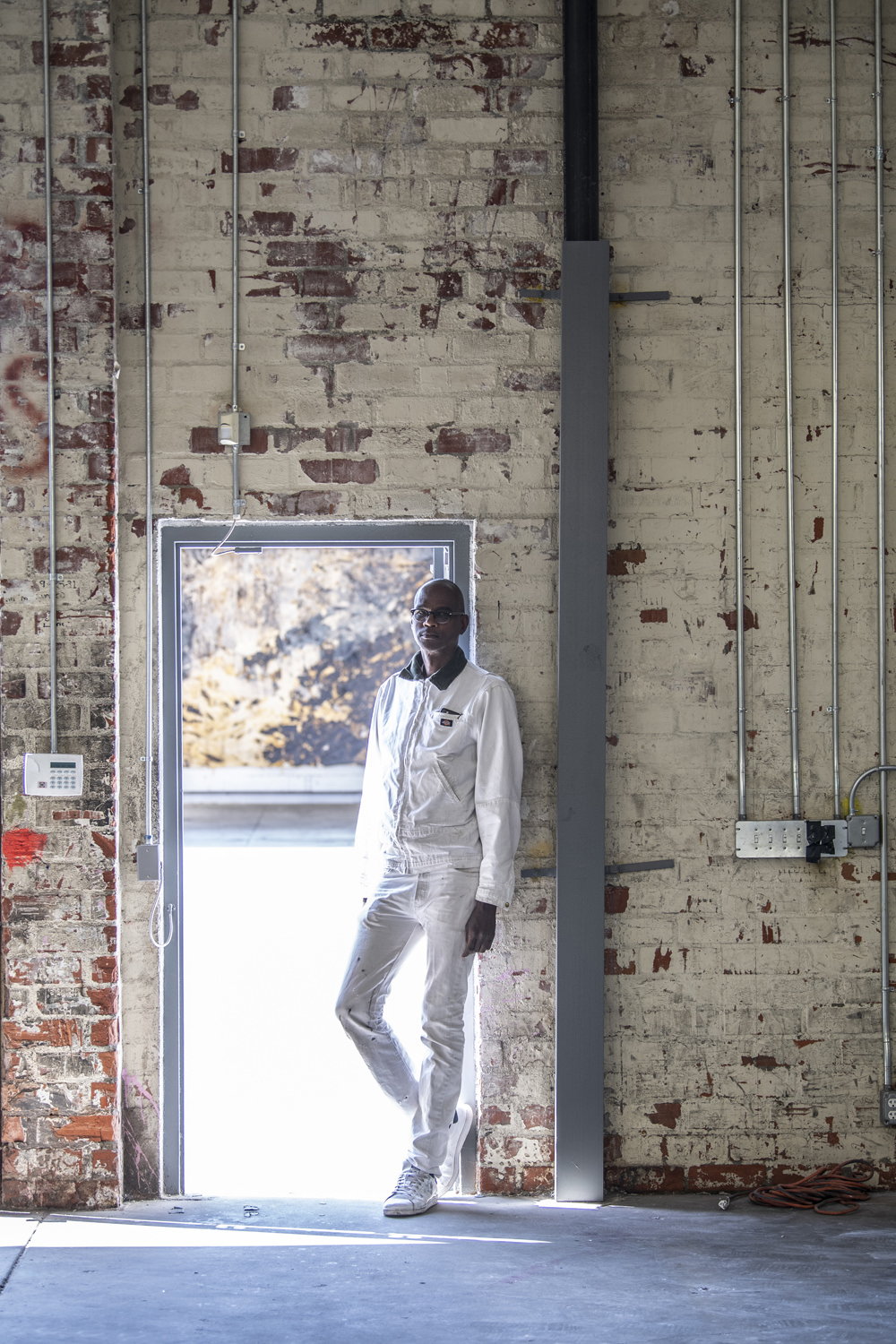
Portrait of Mark Bradford by Sim Canetty-Clarke.
Courtesy of the artist and Hauser & Wirth.
MARK BRADFORD: Lately, I have been gravitating toward in-between sites where conflicts arise. The exhibition shares a title with one of the new works: Cerberus— the many-headed dog who guarded the entryway to hell in ancient Greek mythology. Cerberus represents all gatekeepers and is a way to extend that idea back through time. I wanted to explore the idea of containment and the building of pressure to an incendiary point when the barriers are breached. It feels like there is an urgency I wanted to convey—the concept that when there’s enough pressure put on anything or anybody, eventually it will spill out and it will pour into the streets.
The video work is based on the song “Dancing in the Street” recorded by Martha and the Vandellas. The song became a call to action during the civil rights movement in the mid-1960s. I layer it over the fabric of the city by projecting the footage onto the streets and buildings around my studio in South Los Angeles. In making these works, I give myself license so that history, imagination, and the real become fluid. It’s way of working that is in my bones.
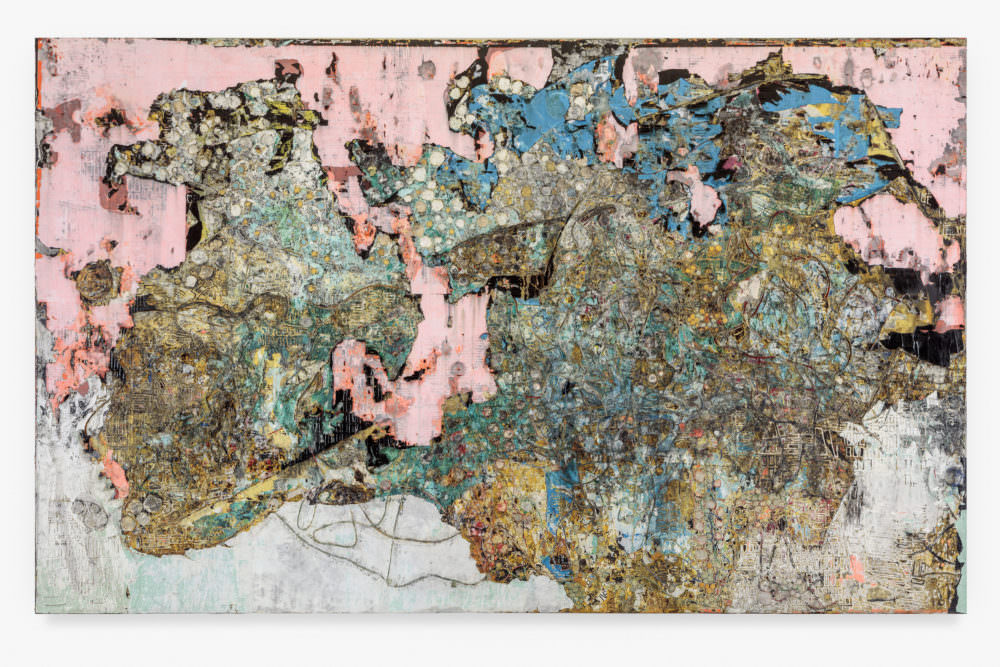
Mark Bradford, Gatekeeper, 2019, photo by Joshua White, © Mark Bradford.
Courtesy of the artist and Hauser & Wirth.
WW: In nearly all your past works, you’ve investigated positions of power and marginalized communities and have reacted to political and social happenings. What is this show reacting to?
MB: It began by thinking about a moment in the history of the city I grew up in—the riots in Los Angeles in 1964, which were called the Watts Rebellion. The community was contained by this intense deprivation, which led to an ignition. I read a report commissioned by the California Governor’s office in 1965 which featured color-coded maps: yellow meant looted, orange meant burned down, an X marked a murder. It was such a cold, numeric way of dealing with the horrific events. In the work those spots become “hotspots,” places that bleed out or explode; they could be an incendiary point or a juncture.
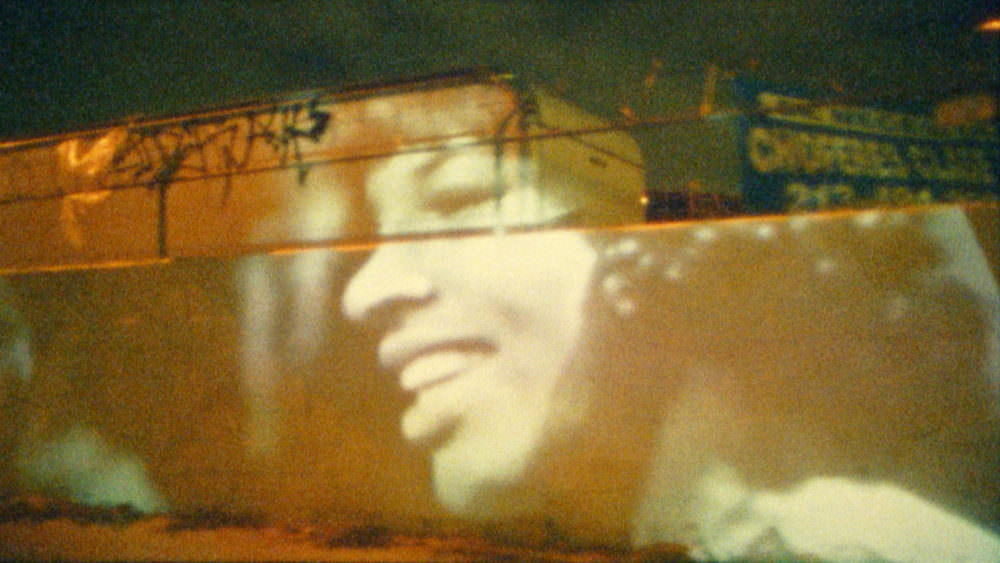
Mark Bradford, Dancing in the Street, 2019, photo by Joshua White, © Mark Bradford.
Courtesy of the artist and Hauser & Wirth.
WW: Do you feel your art is reacting in a new way with today’s heightened climates?
MB: Perhaps humankind is going through an existential crisis. I think we’re becoming more isolated from one another. I’ve also been thinking about the environment, and in some of the works the urban grid gives way to an urban jungle, as if the land is taking back the city. I grapple with history and the social and political landscape. I take the material, abstract it, move it around, close the door of my studio, and make my alchemy with it. I make the work I make and I cannot control how it is historicized. That depends on who’s writing it.
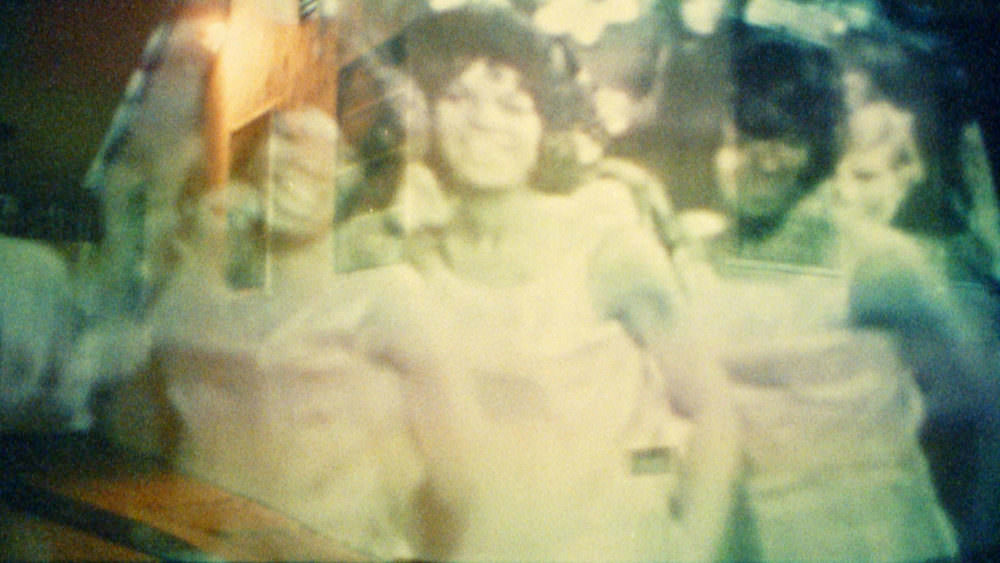
Mark Bradford, Dancing in the Street, 2019, photo by Joshua White, © Mark Bradford.
Courtesy of the artist and Hauser & Wirth.
WW: When in London, where do you like to see art, eat, or relax at?
MB: While in London, I’ll be heading to Tate Modern to see Kara Walker take over the Turbine Hall.
Mark Bradford’s work is on view through October 13 at the Long Museum, Shanghai, and at Hauser & Wirth in London from October 2 to December 21.



